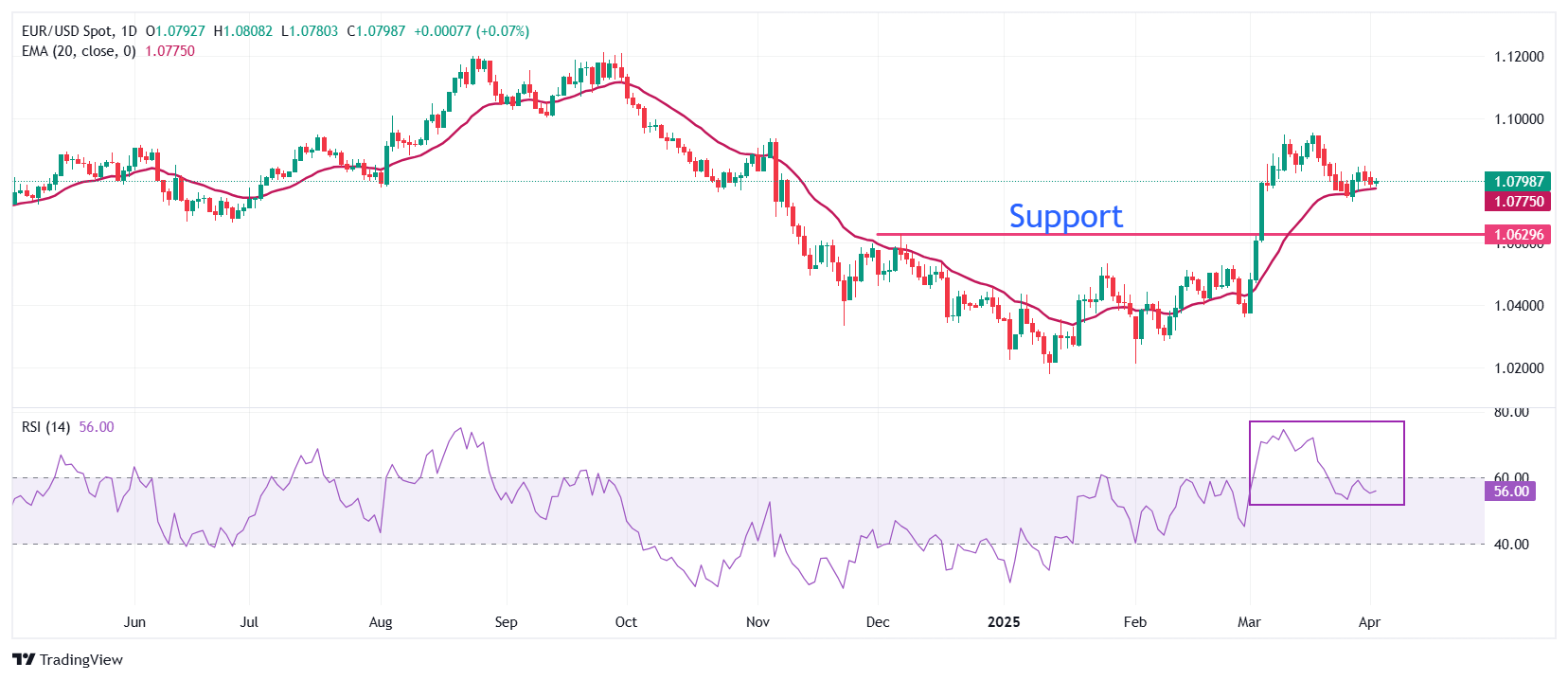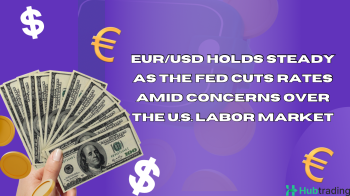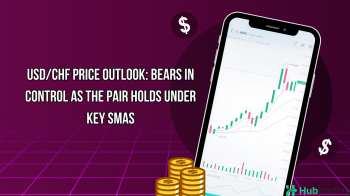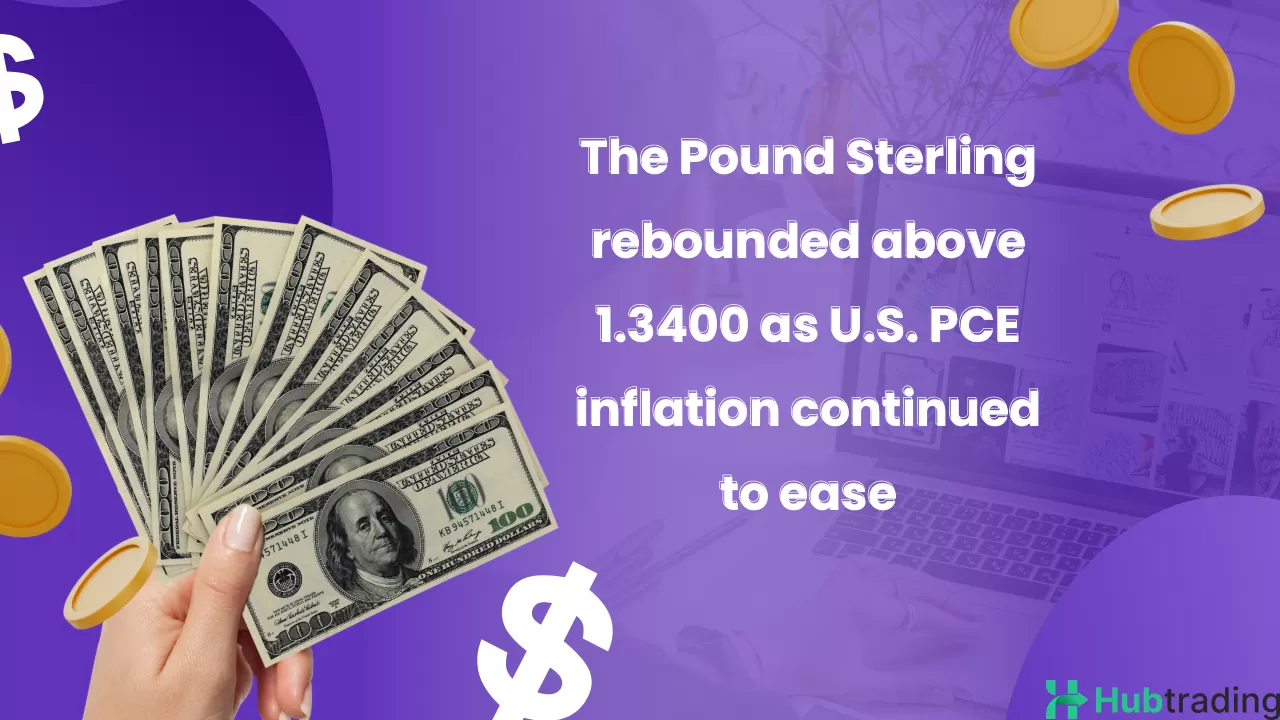-
EUR/USD remains in a narrow range near 1.0800 as traders wait for US President Trump’s announcement on reciprocal tariffs.
-
Concerns over Trump’s tariffs are weighing on confidence among US businesses and consumers.
-
Weaker Eurozone HICP data increases expectations for further ECB interest rate cuts.
EUR/USD holds steady near 1.0800 as traders remain cautious ahead of US President Donald Trump’s announcement on reciprocal tariffs. The market is bracing for the possibility that the European Union (EU) could be one of the leading targets of these tariffs. Trump has repeatedly accused the EU of unfair trade practices, including not purchasing enough US goods, and a significant tariff imposition on the Eurozone would likely have a major impact on the region’s economic outlook.
Last week, European Central Bank (ECB) President Christine Lagarde acknowledged that the ongoing trade tensions could reduce the bloc’s economic growth by 0.5%. Easing inflationary pressures in the Eurozone and a potential slowdown in economic activity are prompting expectations that the ECB may cut interest rates in its upcoming policy meeting. Eurozone inflation data also reflected this, with the core Harmonized Index of Consumer Prices (HICP) rising by 2.4% year-on-year in March, slower than the 2.5% forecast and the prior 2.6% reading.
The EU’s response to Trump’s tariff plans remains a concern, with European Commission President Ursula von der Leyen stating that retaliatory measures could be implemented if necessary. While the EU does not want to escalate tensions, she emphasized that all countermeasures are available and could be used to push back against US tariffs.
Daily digest market movers: EUR/USD fluctuates as Trump’s tariff announcement looms
- EUR/USD trades around 1.0800 during European trading hours on Wednesday, with investors hesitating to take fresh positions ahead of Trump’s scheduled reciprocal tariff announcement at 20:00 GMT.
- The tariffs, expected to be implemented immediately following the announcement, are anticipated to disrupt the global trade system by making products from countries facing higher tariffs less competitive. This could also result in a slowdown in global business investment as firms struggle to forecast demand for their products.
- US Treasury Secretary Scott Bessent’s comments on Tuesday suggested that Trump plans to impose the highest possible levies on US trading partners, but countries could avoid them by complying with US demands, such as lowering tariffs on US imports. Market participants are concerned that these tariffs will not only harm global trade but could also negatively affect the US economy by dampening consumer and business confidence. Recent data from the ISM Manufacturing Purchasing Managers Index (PMI) indicated a contraction in business activity in March, signaling potential negative effects from the tariffs.
- Looking ahead, investors will focus on the ADP Employment Change data for March, set to be released at 12:15 GMT. Private employers are expected to have added 105K new jobs, a rise from the 77K added in February.
Technical Analysis: EUR/USD fluctuates near 1.0800

EUR/USD continues to trade within Tuesday’s range, hovering around 1.0800 as of Wednesday’s session. The 20-day Exponential Moving Average (EMA) provides support around 1.0778, signaling a potential floor for the pair.
The 14-day Relative Strength Index (RSI) has fallen below 60.00, suggesting a slowdown in bullish momentum, though the pair still maintains an upside bias.
To the downside, the December 6 high of 1.0630 remains a key support zone. On the upside, the psychological barrier of 1.1000 serves as the major resistance for Euro bulls.





